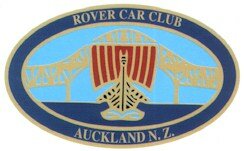

The ROVER 2000 Verses the BMW 2000
By Les Vercoe
The Rover 2000 somehow embodied everything that was modern and go-ahead in 1963. Its lines were simple and futuristic, unlike anything else on the road. It was a 100 mph car for the modem Britain of motorways and post-war high-rise architecture - Centre Point and the GPO Tower - embracing Harold Wilson's 'white heat of technology' in its advanced specification. It wasn't just a new type of Rover, but a new type of car. It defined the market for a new genre of compact but still plush 2.0 litre saloons, destined for an emerging class of young executives. These were men perhaps twenty years younger than the traditional Rover buyer, who didn't want to be cast in the mould of a grey-templed patriarch in a mobile drawing room.
A young executive heading for boardroom stardom, and with responsibility and spending power had a taste for what was modern and new. He wanted a car that reflected his status and attitudes. Before the Rover 2000, he would have gravitated to exotic foreign marques like Alfa and Lancia but was more likely to end up with a Zephyr or a Velox, buy-British patriotism being what it was in 1963. Given a free choice he might even have bought a BMW.

The BMW 2000
In 1963, BMW was a company that could only look over the water at Rover and dream, although there were certain parallels to be drawn. Both had worked on jet engine technology during the war, and traded on a reputation for high quality engineering. Both had built big cars in the fifties, largely for a home clientele. Both recognised the need to diversify in order to survive. In Rover's case its saviour was the Land Raver, and it was the money earned from this in foreign markets that developed the P6 Rover 2000. BMW, with sales of its highly regarded motorcycles failing, clung for grim life to the Italian designed Isetta bubble car. It was briefly fashionable, particularly in the fuel shortages of Suez. but its popularity began to wane despite BMWs attempts at building 'mature' variants like the 600.
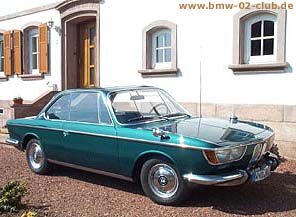
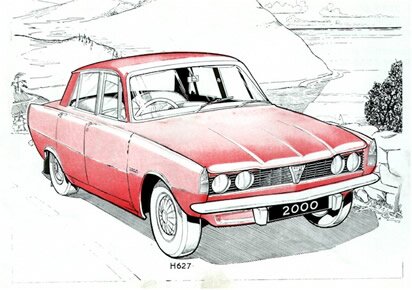
Curious horizontal coil springs were used at the front, feeding stresses into the bulkhead to leave a wide engine bay for a proposed gas turbine engine, but in the event, the Rover 2000 was powered by an all new 2.0 litre overhead camshaft engine developing 90 bhp.
The car was released to rave reviews in the British Autumn of 1963, not just because of its refinement and, at the time, astonishing road-holding, but because it was one of the first British cars - perhaps the first British car - to address safety issues. It had proper four-wheel disc brakes - inboard at the back, a generously padded interior and that muscular base unit. Seatbelts became standard in the Rover 2000 two years before they were mandatory.
If there was a criticism it was that the handling was so good that the car really didn't have enough power to exploit it. Rover countered that argument with the 2000 TC, a high compression twin carb variant launched in 1966. That car made the waiting lists for the Rover 2000 even longer. Here was a car that could top 110 mph and easily outpace its only natural competitor on the British market, the Triumph 2000. Between them, these cars were killing off the UK market for big, ponderous, prestige saloons like Crestas and Westminsters. Suddenly luxury and driver appeal were not seen as incompatible in a saloon.
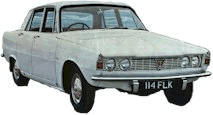

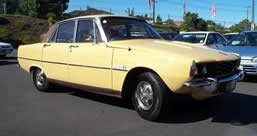
The P6B, developed from the 2000
As the P6 and the Rover spirit ebbed away under the tyranny of British Leyland, BMW boomed. The 2002 was going down a storm in North America and the marque was beginning to ride the crest of aspirational popularity from which it has never really descended. The 2000 saloon, though it carried on until 1972, had long since been usurped by the 2002 and the new, large and handsome six cylinder cars. Still it had done its job and was the beginning of a subtle marketing exercise that is the real genius of BMW.
Back in 1963, when Rover first launched the 2000, it was clear they had done their homework, the car being an instant success. They had first started looking at base unit construction in the early 1950's, with the P6 project first surfacing at Solihull in 1956.
The first prototypes were ready by 1961 and it was clear this car would be the start of a completely new era for Rover. The design itself was quite radical for the early 1960s, and with its base unit construction and bolt on panels, the body could be easily altered to update the car as required in order to compete with anything that Ford, Vauxhall or the Rootes Group might produce at a later date.
By 1969, when the car had been in production for six years, Rover still could not produce enough cars to keep up with demand. Ultimately the body would require no major alterations save some minor cosmetic refinements, which would help to keep the car looking so fresh for so long. Parked among the Corsairs, Victors and Hunters the Rover-definitely looked a distinct cut-above.
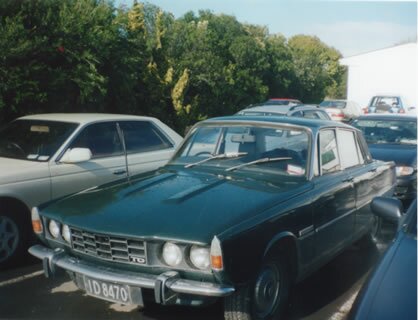

The BMW is boxier, more severe with harsh, angular lines that haven't aged quite so well, although the tall glassy greenhouse set the trend for later BMWs in its modernist simplicity. The shark-nose and the kicked-up rear side window are themes BMW maintained, but it seems to sit high on its narrow little steel wheels with an awkwardly high bootlid, which at least promises a massive boot.
Sit inside the BMW and you are aware of high windowsills and a standard of finish that is no more ostentatious than that of a contemporary Volkswagen. There is an unremarkable set of VDO instruments and unidentified knobs in a shapeless dash behind a huge wood-rimmed steering wheel. You sit on large, hard and broad seats presumably intended for large, broad German bottoms. They give you a good view over the flat expanse of the bonnet. I like its austerity, the sense that this is a car rather than some mobile front room.
That feel follows through m the driving. The engine makes a harsh, throaty sound, running a little unevenly on Solex carbs that are notoriously hard to tune. The revs pick up sharply and you can hear a wine from the overhead camshaft that couldn't be anything other than a BMW The clutch is on the heavy side, but the gearlever moves with a slick, mechanical action that you recognise, again as pure essence of BMW. Its quite low geared emphasising the engine's eager pick-up - the car shoots off, throwing your head back and you register surprise at just how quick this car feels. It's lighter than you might expect, weighing in at 2500lbs, to the Rover's 2800lbs, and the engine shows a remarkable willingness to shoot round to 6000 rpm at every opportunity, yet is still tractable and torquey.
As you pick up speed the heft in the steering drops away and you realise the BMW is a precise car, with a faithfulness to the steering and a resistance to understeer that is at odds with the initial impression of softness. It sits square in corners, gently understeering and eventually lifting a rear wheel as its limits are approached and feeling for all the world like a slightly grownup 2002 - which of course, is exactly what it is.
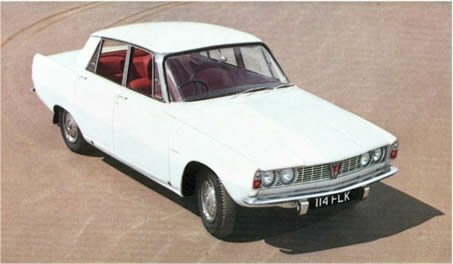
As a businessman in a hurry, you would have been able to point this car down a relatively deserted M1 confident that only the occasional jaguar would have had the authority to flash you out of ita path. The 2000Ti would sit at 90 plus mph all day long on its supple, resilient suspension, a little under-geared perhaps, bit with stamina few ordinary saloons could match. That, after all, was what you were paying for.
The Rover's cabin is a fine blend of modem clean Sixties lines and comfortably faniliar materials. With its shin bins. its ergonomically designed controls - a first in a British.car - and its safety padding, it has to be one of the high points of interior design in a British car- -mould breaking stuff back in 1963. Nothing jars, not even- the strip speedometer, the imitation woodwork or the early injection moulded plastics. This is Sixties modernism at its best, simple and functional. The seats are firm and embracing, but feel a bit short in the base and lacking in support under the thigh, but otherwise you feel instantly at ease in this intimate cabin, where even the rear seats are individually contoured. The steering column adjusts vertically and the seats recline - both uncommon attributes in the mid 1960s.
You feel slightly remote from the outside world in the TC, although its engine is fairly intrusive. It delivers brisk acceleration, striding out to 6000 rpm as shown on its tachometer, which gives about 55 mph in second gear, something over 80 mph in third and the promise of 100 mph cruising. It feels solid, handy and ideally sized, a little more mature than the BMW, but not quite so zestful or pleasant sounding. The ride of the 2000 is total class - level, supple, rarely disturbed or caught unaware. Its long distance comfort puts it in a class above. In fact few bigger cars could match it at the time - including Rover's own P5 3 Litre.

The stubby gearlever seems to invite liberal use of the four ratios, which feel quite high because of the relatively tall overall gearing of 19.8 mph per 1000 rpm. Its movements are short and stiff with high loads to be overcome in the remote linkage, and the clutch is smooth, well damped but moderately heavy.
What contemporary testers called 'sports car road holding' and 'finely tuned handling' feel pretty ordinary now, but the 2000 will probably out-corner the BMW, even if it rolls quite a lot more, and imparts a feeling of unruffled composure that must have been difficult to match 39 years ago. The low gear ed steering lightens above walking pace but never offers quite the feel of the BMW, feeding back through a veil of sponginess that you don't really notice after a while.
If theNeu Klasse was the carthat cast the modern mould for the BMWs of today, then the P6 was really the last decent Rover. In its combination of quality, compactness and upwardly mobile aspirations it embodied everything that we came to hold so dear, years later in the BMW 5 Series. Had Rover maintained its standards and built a modem P6 - an Eighties interpretation, it could have taken BMW on at its own game and saved us from BMWs all pervasive global branding that has turned the marque into an automotive version of Nike or McDonalds. Unfortunately that was not to be - British Leyland made certain of that, all but killing off the goose that laid the golden egg.

A Rover to take on BMW? It seems laughable now, but it shouldn't have been difficult. As the last 35 years have shown, the Bavarians were not given to daring engineering solutions of the kind that made the original P6 so radical in its time and class.
But alas, due to the mismanagement of British Leyland this was never going to happen. Instead they gave us the SDI - Enough said.
